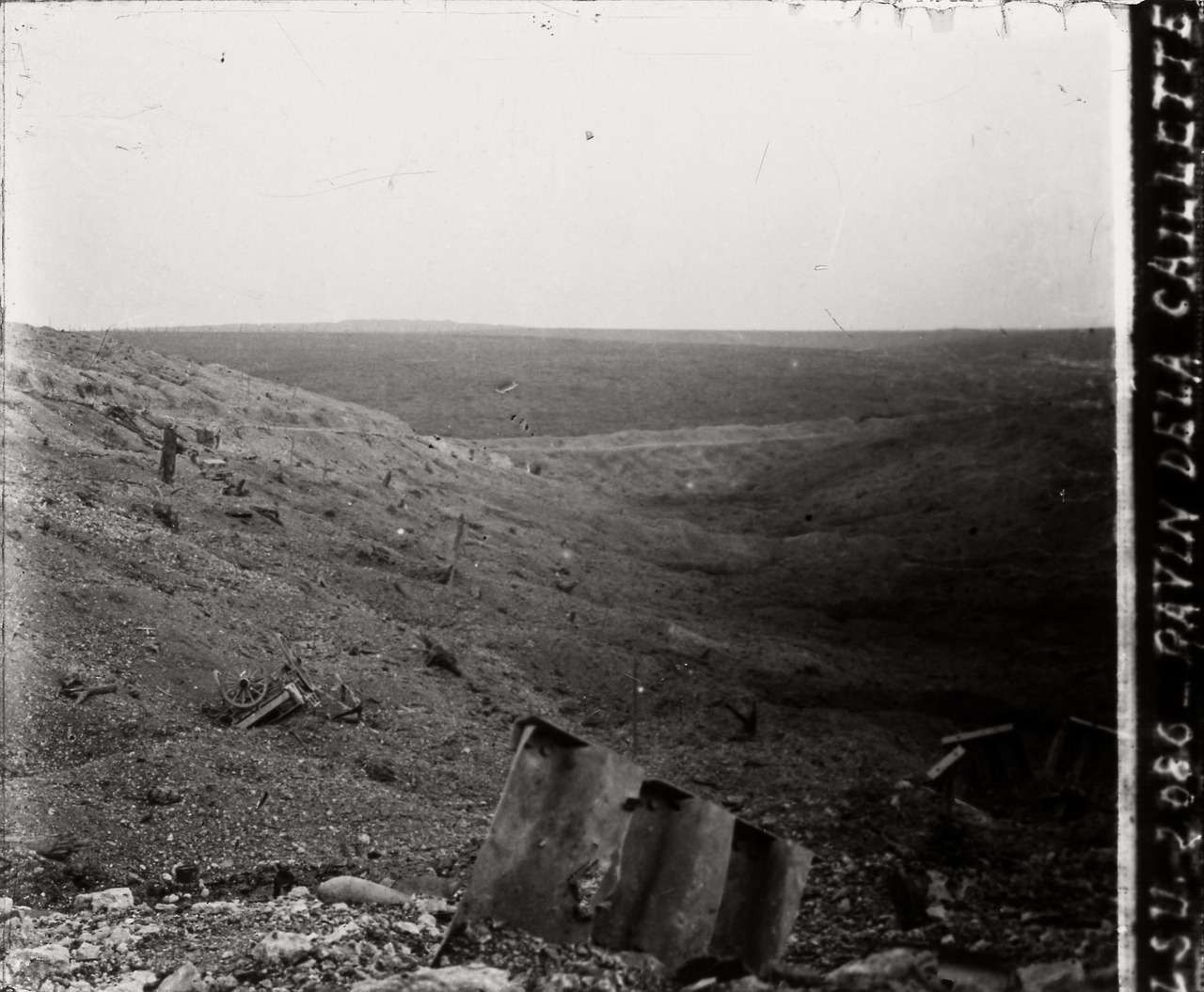
German commanders became increasingly desperate, and in early summer began a new attack. However, Pétain used a rotation system to relieve French troops at Verdun, which involved most of the French Army in the battle but for shorter periods than German troops. Verdun did indeed draw in the French troops as Falkenhayn had wanted: 3/4 of the French Western Front divisions would eventually serve there. The ‘Lion of Verdun’, French commander Philippe Petain went on to become a controversial figure in French politics.

Over the spring of 1916 offensives and counter-offensives were launched at great cost and for little gain for either side. Initial German attacks proved successful, and French commander Philippe Pétain ordered his men to dig-in and defend their new lines to the death. The German plan hinged on the amount of artillery firepower at their disposal, with the aim of enveloping the defences in shellfire in order to minimise German infantry casualties. Defence of the fortress was therefore focused on holding lightly-manned but heavily protected smaller forts. Watch Now “Bleed the French white”Īs the war carried on into 1916 and with neither side able to forge a decisive advantage, the German high command began to plan a huge assault on the area, designed to “bleed the French white” and break their morale.įrench commanders quickly realised that a new approach would be needed to combat the immensely powerful German artillery. The loss of such a citadel would be an enormous blow to French morale.ĭan Snow takes an emotional journey through the key battlefields of the Western Front, from the memorial parks at the Somme to the formidable defences around Ypres. To the French people, Verdun was also a symbolic fortress and a national treasure. Verdun was a fortress city on the River Meuse, and a strategically-vital link in the French sector of the Allied line on the Western Front. By combining the Verdun offensive with a U-Boat offensive against British shipping, Falkenhayn thought France and Britain would be forced to make terms with the Germans.

The heavily fortified area of Verdun remained a formidable salient into German territory which threatened the main German communication lines. By attacking Verdun, the French Army would be drawn into circumstances from which it could not escape – for reasons of strategy and prestige.īelieving that the war would be won or lost in France, Falkenhayn hoped that France would ‘throw in every man they have’ to defend it, which would thus drain its army of resources. Without France’s 96 divisions, the Allies would be unable to continue fighting in the west.Įrich von Falkenhayn, the chief of the German General Staff, believed the key to German forces making a breakthrough on the Western Front was to launch a concentrated offensive against the French.
VIETNAMESE VERDUN WW1 FULL
Germany aimed to crush the French army before the Allies grew in strength with the full deployment of British forces.

Just why was it so important that the French were successful in the Battle of Verdun, and what strategic implications did this have for the rest of the war? Why Verdun? Significance to Germany: The endless rows of white crosses that now cover the area are testament to the war’s longest and hardest-fought battle which lasted 10 months, from 21 February – 18 December 1916. Alongside the Somme, the name of the fortress town in eastern France is synonymous with the worst horrors of World War One.


 0 kommentar(er)
0 kommentar(er)
